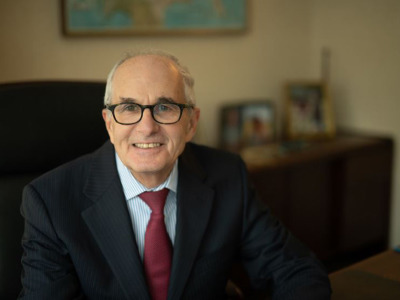The landmark civil rights lawsuit by Indian farmers and ranchers against the Department of Agriculture for discriminatory lending practices has come to a conclusion (barring any unexpected turn of events on appeal.) U. S. District Court Judge Emmett Sullivan approved an agreement reached by the Government, counsel for the plaintiffs’ class, and Mrs. Marilyn Keepseagle, the lead class representative.
Originally, USDA settled the case in 2011 for $680 million. However, in 2013, after the entire distribution process had been completed, class counsel notified the Court that approximately $380 million remained in the settlement fund. This led to a disagreement over how to best use these funds for the benefit of the class members: Keepseagle II.
Initially, Mrs. Keepseagle sought to distribute the entirety of the remaining funds to the 3,605 class members that had filed successful claims. The Court denied Mrs. Keepseagle’s motion after both the Department of Justice and the class counsel objected. Attorneys for the class, Mrs. Keepseagle, and the Department of Justice then entered into negotiations in an attempt to hash out a mutually agreeable compromise.
On April 20th, the D.C. District Court approved the proposed settlement supported by U.S.D.A., Class Counsel and Mrs. Keepseagle. The compromise will distribute the remaining funds in the following manner:
1) $21,275 in payments to each successful claimant ($18,500 – in direct payments, $2,775 – to the IRS as tax relief payments);
2) $38 million to be distributed to nonprofits chosen by Class Counsel within 180 days; and
3) $265 million to capitalize the Native American Agriculture Fund, a trust administered by Native American leaders, for the benefit of Native American farmers and ranchers over the next 20 years. It will be largest such trust ever created to benefit Indian farmers and ranchers.
In his decision, Judge Sullivan relied heavily on the recommendation of Mrs. Marilyn Keepseagle. Judge Sullivan quoted Mrs. Keepseagle who stated “While I proposed a larger supplemental distribution, I support the proposed Addendum (settlement) because it is the best available compromise and the best option available for improving the terms of the Settlement Agreement in a timely manner.”
Most of the attention to date has focused on the size of the individual supplemental payments ($21,275). The difference between the first Settlement Agreement and the compromise approved by the Court, however, in how it treats the remaining funds also deserves attention. The original Settlement Agreement called for the Class Counsel to evenly distribute funds among charities of their choosing. The new plan calls for a trust administered by Native Americans to review grant proposals and decide how best to leverage the funds to benefit the most number of farmers and ranchers.
The very highest unemployment rates in the United States are
on rural Indian Reservations. Far from urban centers, they rely on farming as
the primary source of private sector employment. The unemployment rates on
these reservations generally exceed 50% and can reach as high as 80% o
The new settlement also expands the types of organization that can submit grant applications and carry out work on behalf of the trust. For example, educational organizations were disqualified from participating under the original settlement. Under the rules of the new trust, educational organizations, including Indian colleges, can apply for grants and work for the benefit of Native farmers and ranchers on behalf of the trust.
Mr. George Keepseagle and Mrs. Marilyn Keepseagle originally
filed this class action in 1999. Their courage and leadership made this all
possible. While this is a very large settlement, thei
While this litigation is behind us (hopefully) the federal
government still gives Indian reservations and Native Americans the short end
of the stick. For example, each year the federal government makes approximately
$1 billion from the sale of electricity produced by the dams along the Missouri
River. The dams flooded the most productive lands of the Indian tribes along
the Missouri River but this revenue is not shared with the tribes. Indeed, the tribes
are charged for the electricity they use. If the revenue was split in some fair ratio,
the Tribes could afford irrigation and other infrastructure upgrades to expand
their agricultural operations and improve their quality of life.
Beyond the Keepseagles, there are two other individuals who deserve special mention in this historic story. Former Chairman Michael Jandreau of the Lower Brule Sioux Tribe (now deceased) was one of the first and loudest voices to call for a modification to the original settlement when he heard there was some $380 million left over after the distribution. He then formed the Great Plains Claimants, a group of the successful claimants who objected to having class counsel distribute all of the remaining funds to charities of their choosing.
The second person who played an important role was Connie Knight of the Cheyenne River Sioux Tribe. She worked with Chairman Jandreau to greatly expand the number of people participating in the Great Plains Claimants group. This group was given a special amicus status with the Court. Under the leadership of Mrs. Keepseagle, and with the support of the Great Plains Claimants, Class Counsel and the federal government agreed to renegotiate a new “final settlement.”

